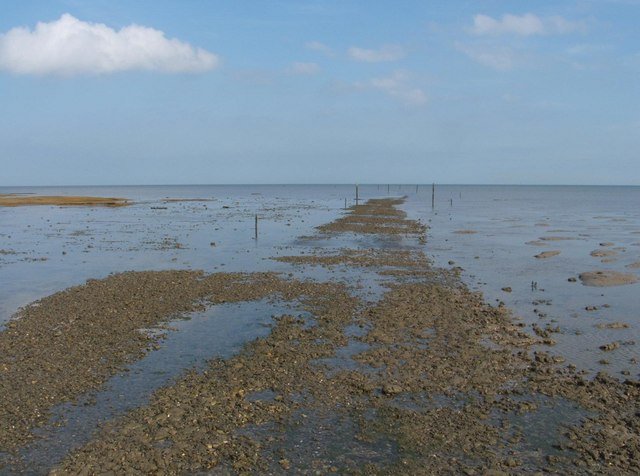
The Doomway – Britain’s Deadliest Footpath Has Claimed Over 100 Lives
Published on December 9, 2020 at 9:08 AM by Mc Noel Kasinja
The Broomway, a 600-year-old footpath connecting the coast of Essex to Foulness Island, in the UK, is rumored to have claimed over 100 lives over the centuries, which has earned it the reputation of Britain’s deadliest path and the eerie nickname “The Doomway”.
For centuries, the Broomway was the only way to access Foulness Island on foot. Recorded as early as 1419, the footpath runs for about 6 miles through vast sand flats and mud flats that look deceptively easy to navigate in good weather, but that can prove deadly in less than ideal conditions.
Named after the hundreds of “brooms” – bundles of twigs attached to short poles – which once marked the path, the Broomway is now outlined by wooden poles that are easy to miss in fog and heavy rain. And getting lost in the treacherous sand flats can be deadly, for a number of reasons.
When the tide goes out between Foulness and the coast of Essex, vast swaths of sand and mud flats are revealed, but only the marked Broomway is reliable enough to traverse. Straying off the path opens travelers up to all kinds of dangers, such as deep holes covered with mud, or quicksand traps that can swallow a person. That’s why trying to traverse the Broomway in mist, fog or heavy rain is considered extremely dangerous.
But even staying on the path is risky, if you venture on the Broomway at the wrong time of day. When the tide comes back, it comes fast, or at least faster than the average person can run, flooding the sand flats and making them extremely hard to navigate. Death by drowning for anyone caught on the sand flats when the tide comes in has been described as “near inevitable”.
Stories of people whose lives have been lost on the Broomway, or who barely escaped with their lives have been recorded by various writers over the years, people like Rochford historian Philip Benton. The Foulness Burial Register records 66 bodies recovered from the sands since 1600, but there are dozens others’ whose bodies were never found.
One of the reasons why the Broomway is so dangerous is its deceptiveness. In good weather, walking along the vast sand flats feels like walking on a very wide beach, but that can change in a matter of minutes, when the tide comes in. That’s why there are still many warning signs alerting people to the dangers posed by the walkway, even though it’s not longer the only way of reaching Foulness Island by foot.
A road bridge was built over Havengore Creek in 1922, and the Broomway has since seldom been used by anyone except members of the military. Still, there are daredevils attracted by the eerie reputation of “The Doomway”, as Edwardian newspapers once called it, so the warning signs are still quite necessary.
“Warning: The Broomway is unmarked and very hazardous to pedestrians,” one sign reads. “Warning: Do not approach or touch any object as it may explode and kill you,” another one warns. If the natural hazards of this footpath weren’t enough, the military has been conducting artillery drills on Foulness Island since WWI, and some unexploded ordinance may have wound up on the sand and mud flats as well.
Because of all the reasons listed above, members of the public are only allowed to walk the UK’s deadliest path on specific days. To get to the starting point, a person must pass through land owned by the Ministry of Defense, so it’s a good idea to call before traveling to the Broomway.


